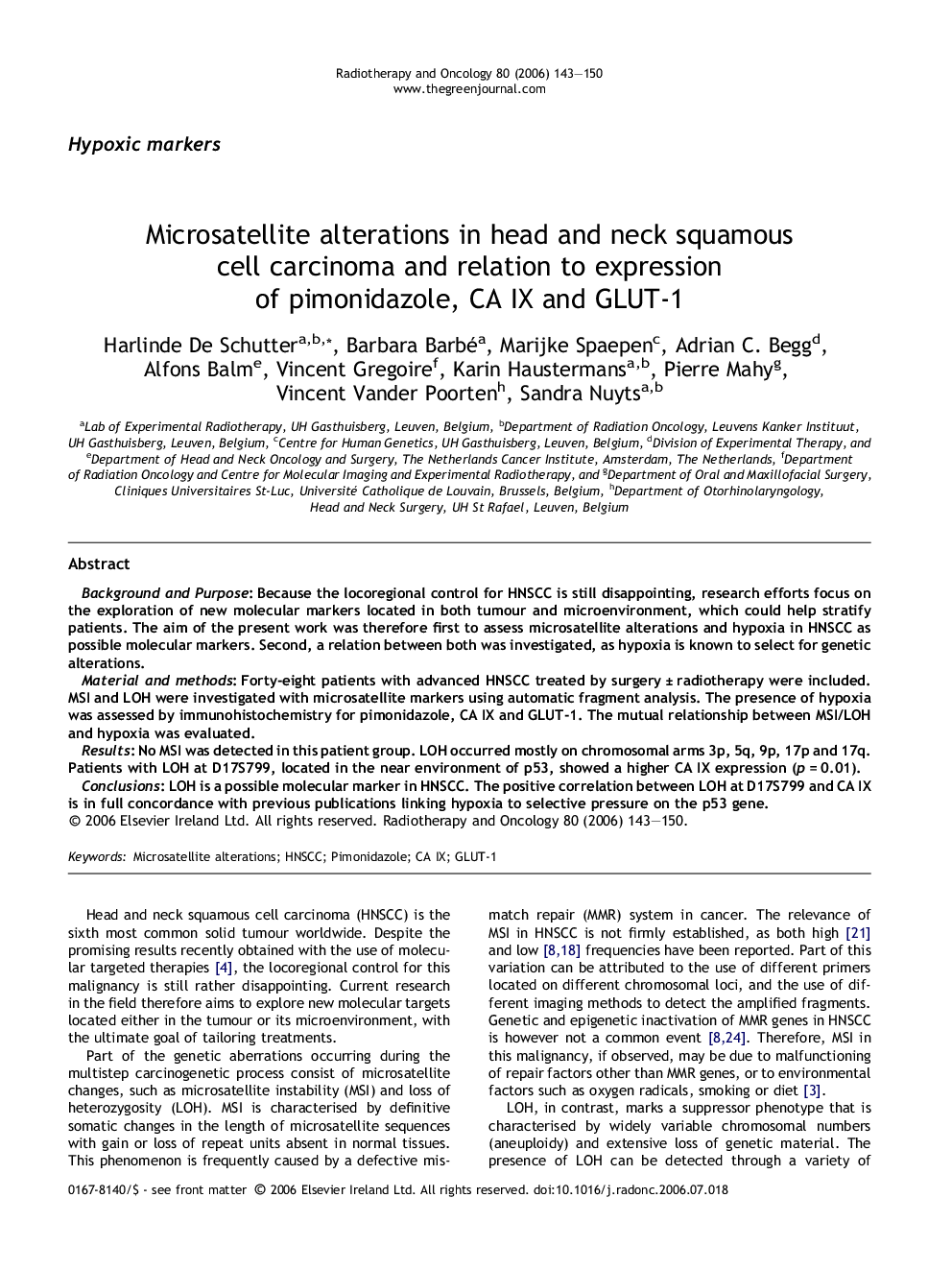| Article ID | Journal | Published Year | Pages | File Type |
|---|---|---|---|---|
| 2161316 | Radiotherapy and Oncology | 2006 | 8 Pages |
Background and PurposeBecause the locoregional control for HNSCC is still disappointing, research efforts focus on the exploration of new molecular markers located in both tumour and microenvironment, which could help stratify patients. The aim of the present work was therefore first to assess microsatellite alterations and hypoxia in HNSCC as possible molecular markers. Second, a relation between both was investigated, as hypoxia is known to select for genetic alterations.Material and methodsForty-eight patients with advanced HNSCC treated by surgery ± radiotherapy were included. MSI and LOH were investigated with microsatellite markers using automatic fragment analysis. The presence of hypoxia was assessed by immunohistochemistry for pimonidazole, CA IX and GLUT-1. The mutual relationship between MSI/LOH and hypoxia was evaluated.ResultsNo MSI was detected in this patient group. LOH occurred mostly on chromosomal arms 3p, 5q, 9p, 17p and 17q. Patients with LOH at D17S799, located in the near environment of p53, showed a higher CA IX expression (p = 0.01).ConclusionsLOH is a possible molecular marker in HNSCC. The positive correlation between LOH at D17S799 and CA IX is in full concordance with previous publications linking hypoxia to selective pressure on the p53 gene.
